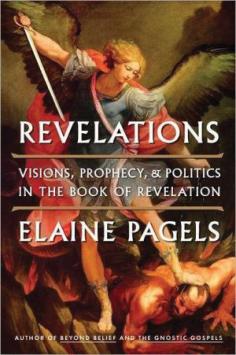By Elaine Pagels (Viking Press, 2012)
Seven-headed dragons, locusts with human faces, and armies of monsters could all be elements in popular fantasy novels. Instead, they have a much older origin: the Book of Revelation. In Revelations: Visions, Prophecy, and Politics in the Book of Revelation, Elaine Pagels explains how these battle scenes and beasts developed from John’s vision into a book of the Bible.
Weeding through centuries of interpretation, Pagels argues that John likely had a specific message in mind when he penned Revelation in the late first century. Despite violent and disturbing images, John’s writings gave Jesus’ followers hope, ultimately foretelling the destruction of early Christianity’s greatest enemy—the Roman empire. At the time of John’s writing, the empire seemed indestructible, as it was not only persecuting Jesus’ followers but dominating the entire world.
Surprisingly the end of Roman persecutions and the establishment of Christianity as the empire’s official religion did not dim Revelation’s appeal. The threat of Rome was gone, but Christianity remained in danger from internal disputes over what constituted orthodox Christian belief. When Athanasius of Alexandria added Revelation to the first canonical list of New Testament writings, he interpreted the book as a foretelling of battles between Christians who accepted the Nicene Creed and those who did not. Martin Luther famously complained that Revelation had “no Christ in it,” but recognized its value in bolstering his arguments against the Catholic Church.
Thanks to Pagels, readers learn that interpreting Revelation dates to the earliest days of Christianity. John wrote a book to cheer a small community of believers. That two millennia later his images of terror would be used by activists, artists, religious leaders, and politicians to interpret their own times is an idea that likely would shock even John’s capacious imagination.
This article appeared on the November 2012 issue of U.S. Catholic (Vol. 77, No. 11, page 43













Add comment